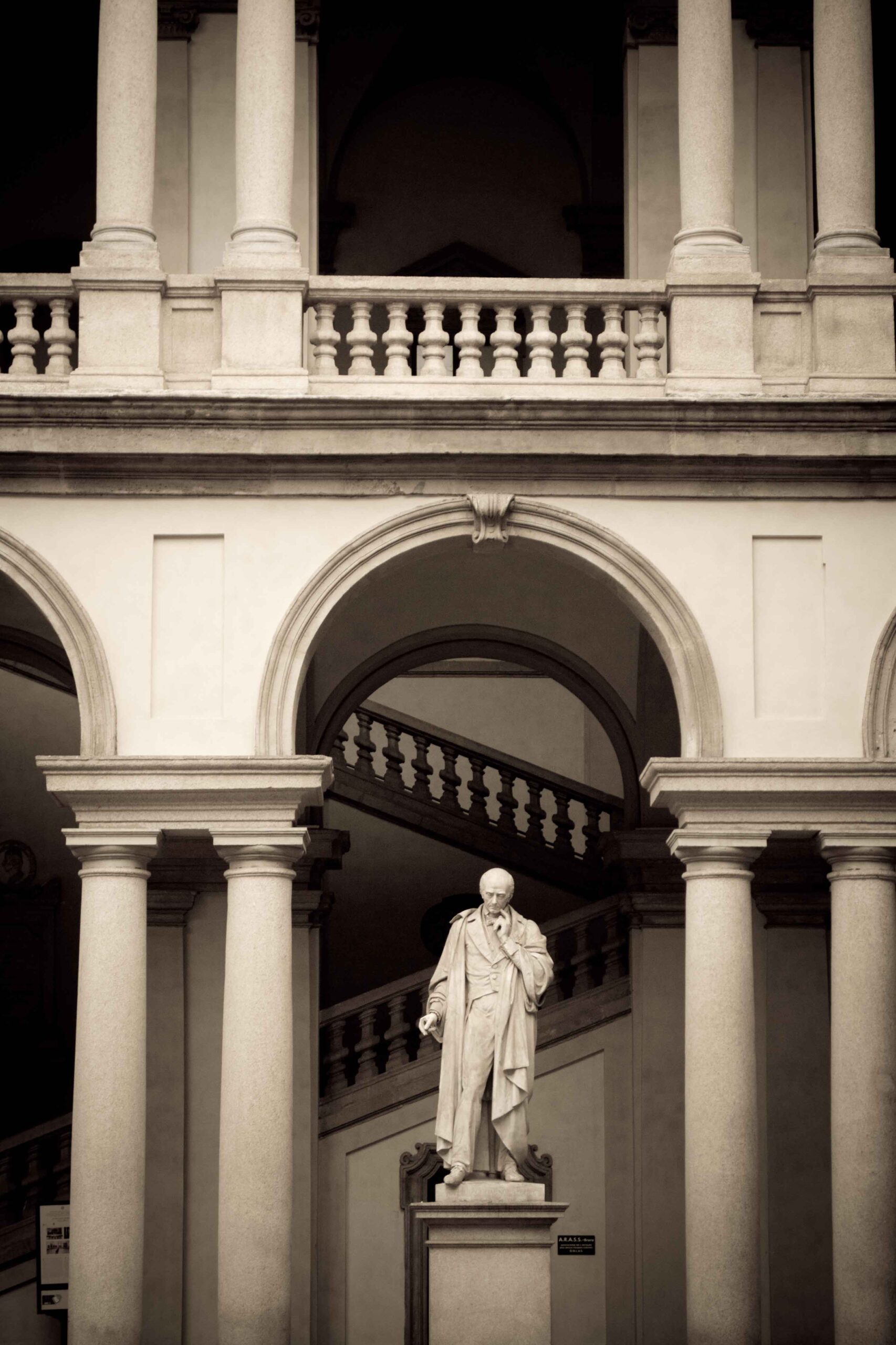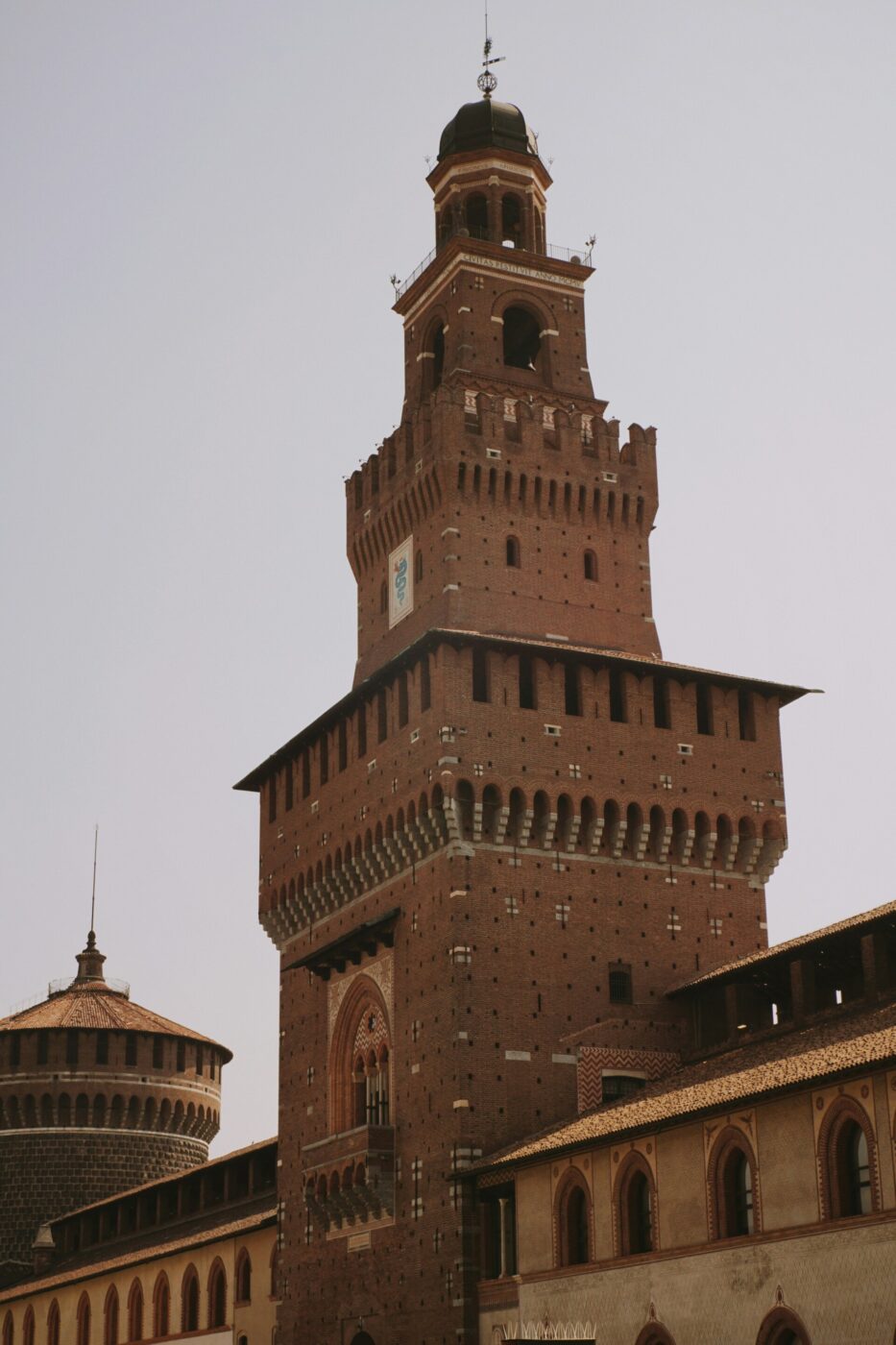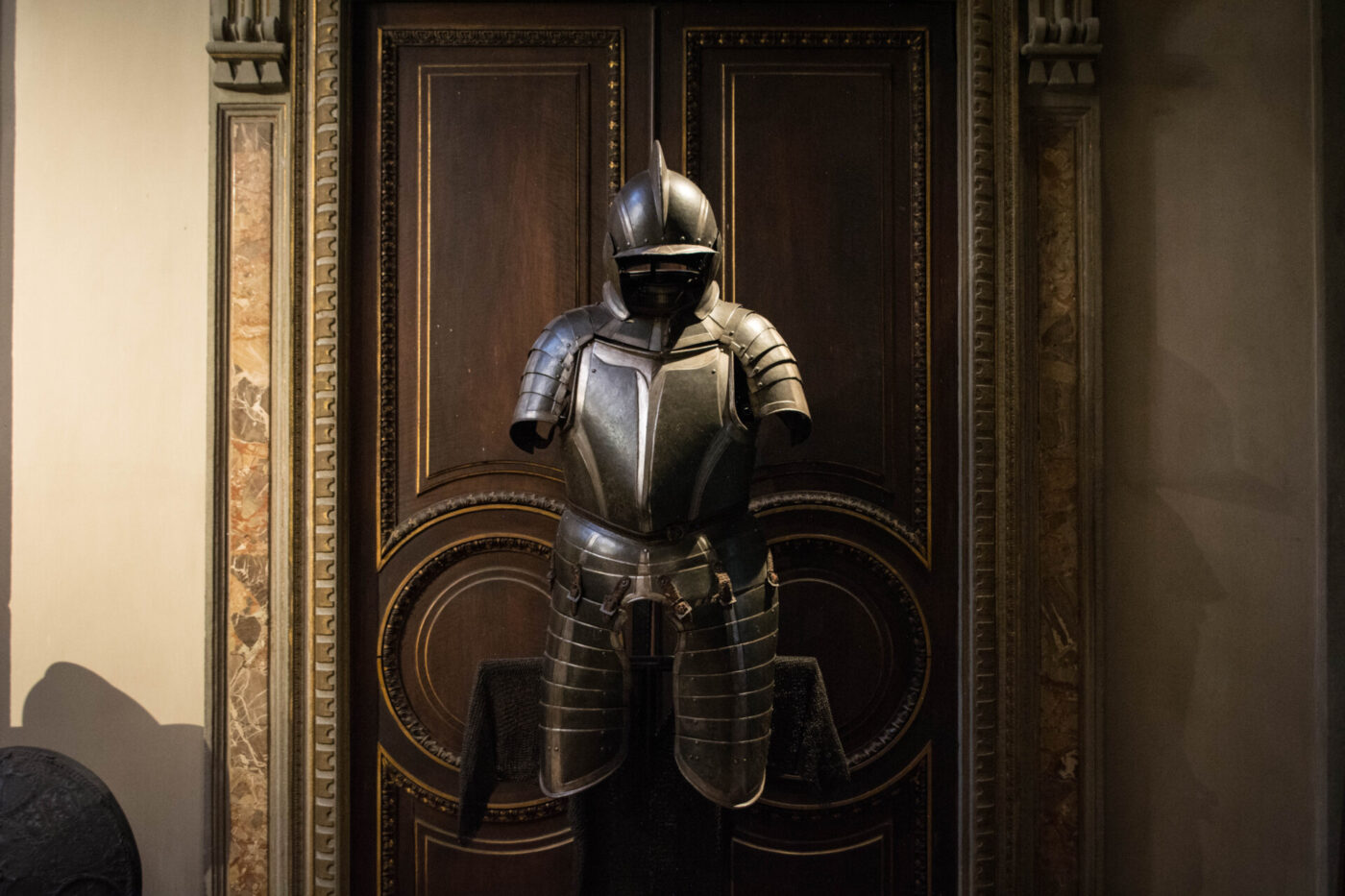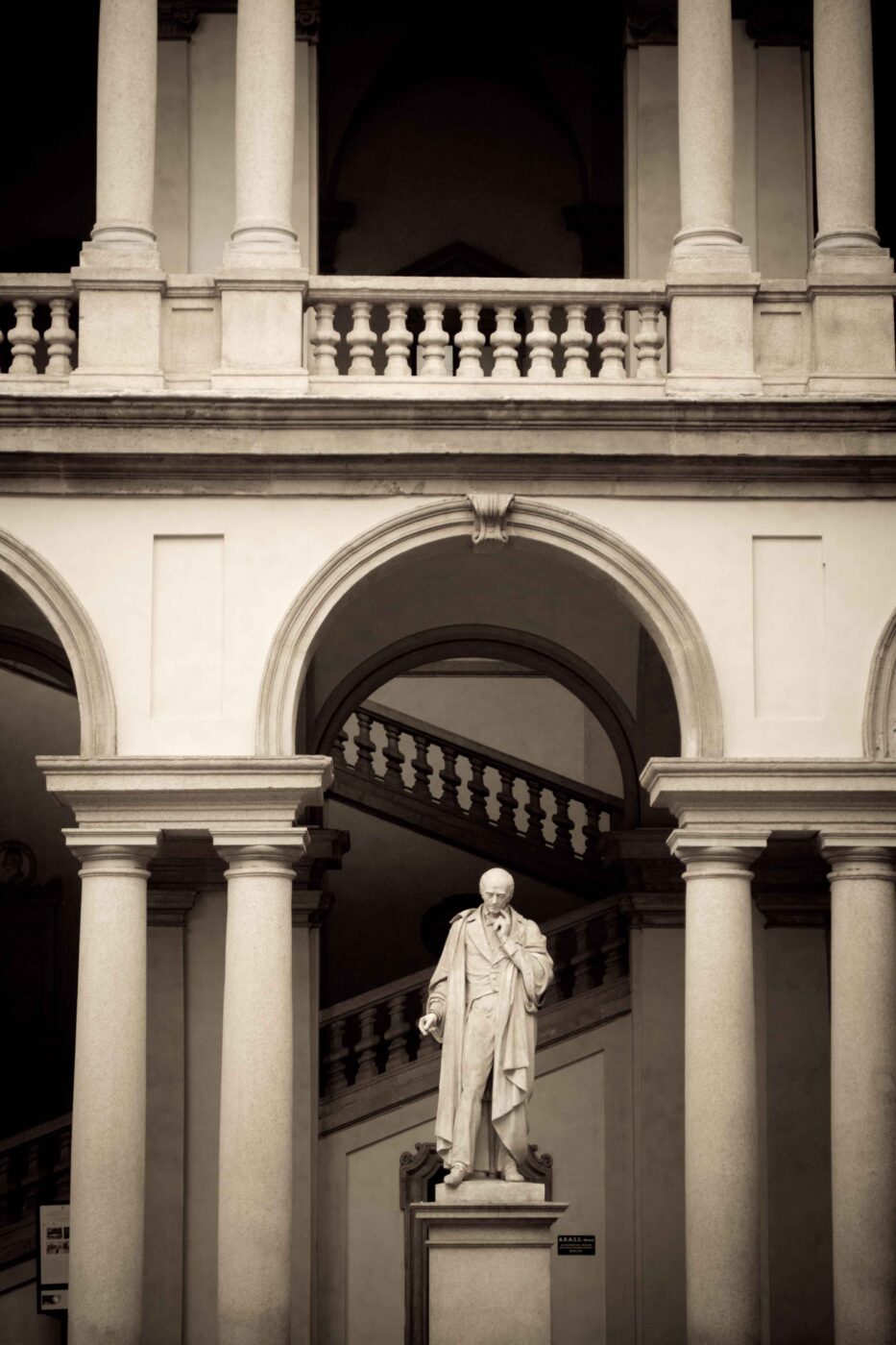Let’s get straight to the point. Milan is never going to be the first point of call on an art-driven tour of Italy. There are other perceived priorities to address first. First and foremost is the Holy Trinity of Venice, Florence, and Rome respectively for the demi-Gods of Titian, Raphael, and Michelangelo. Plus, the travel route that takes you from Venice to Rome makes the logistics of visiting Milan on the same trip rather illogical. To add further fuel to the fire, Milan’s artistic legacy is not as established as other cities across the length of Italy–its renown instead being for fashion, finance, and frivolity.
As a bona fide art curator (ok, maybe one who retired aged 28 to write about wine instead), I can tell you though that this perspective is wrong. Let’s start with the basics: Leonardo da Vinci. Despite having trained in Florence, da Vinci worked in Milan from 1482 to 1499 and then from 1508 to 1513 on various religious and secular projects. If there is no greater figurehead for why Milan should be recognized as an artistic center worth your salt then I don’t know what is.
And if that’s not enough, then all you need to do is to take a look at the variety and richness of museums that pay homage to Milan’s artistic history, be that grandiose settings such as the Castello Sforzesco or the intimate house-museum of the Poldi-Pezzoli, and the varied collectors, from the Sforz Duchy to the Barons Bagatti Valsecchi, whose holdings over the centuries have become part of the city’s fabric. And in turn lending Milan the status of one of the greatest nuclei of art in Italy that I can think of.
Here then is the concise guide to Milan’s museums that you should visit… namely in order to pass the time until it’s aperitivo hour (an art that Milan does exceedingly well).
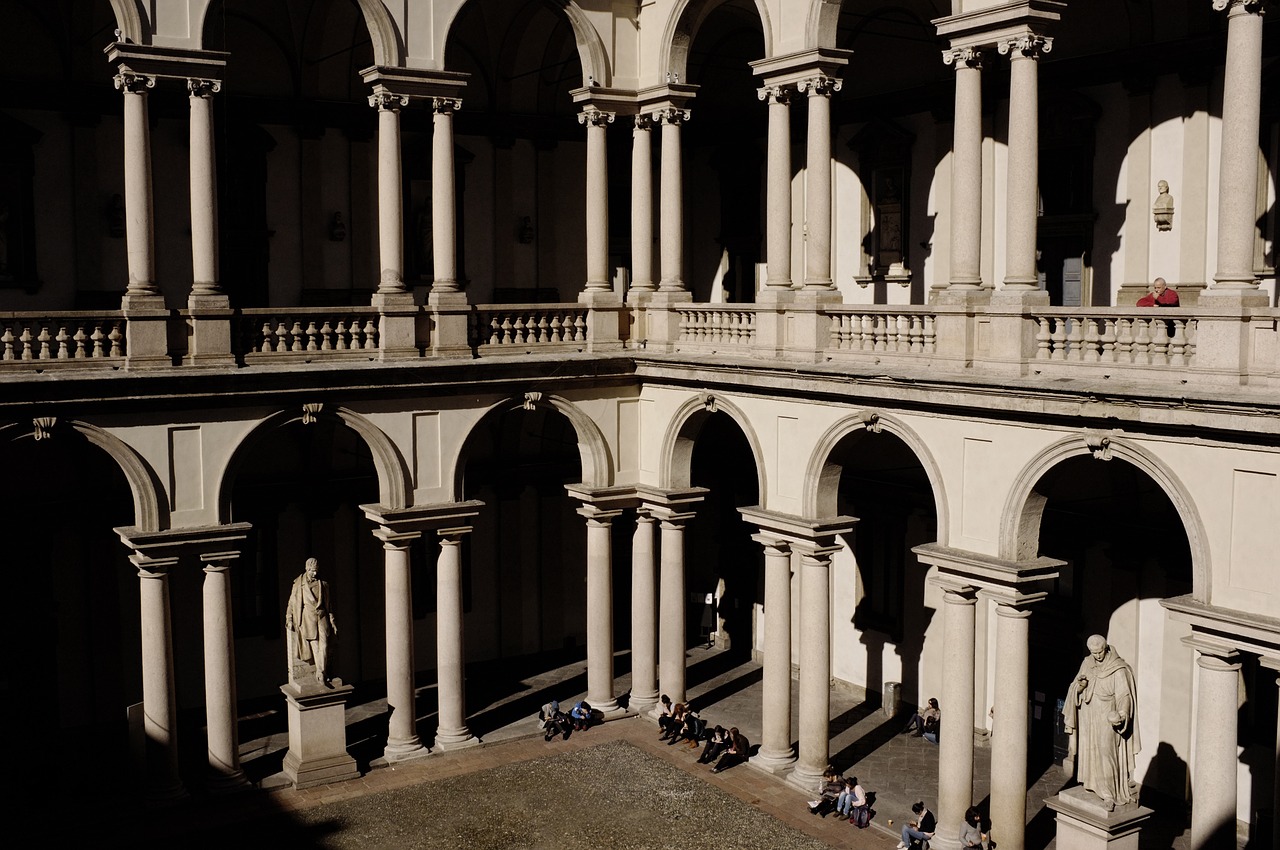
Pinacoteca di Brera
Pinacoteca di Brera
The jewel in the crown. The first stop on any art lover’s tour of Milan, the Pinacoteca di Brera is one of the largest buildings in Milan and, by proxy, the largest museum in the city. It was founded in 1776 and, since then, has become a repository for works procured from across Italy. Napoleon was the instigator behind this, using it to store artworks pilfered from across Italy, with designs to establish it as the “Louvre of Italy”. This intent is attested to by the imposing statue of the French conqueror as “Mars the Peacemaker” by Antonio Canova that dominates the museum’s courtyard. Though many of the works he had his army steal from churches and palazzi have been returned to their rightful locations, the Brera still retains an exceptional collection with a rich holding of works from Veneto as well as from Lombardy. Many go simply to see Francesco Hayez’s The Kiss, but it is also worth lingering in the first few galleries to admire some of the finest artworks from the Renaissance, including masterpieces by Andrea Mantegna, Raphael, and Piero della Francesca.
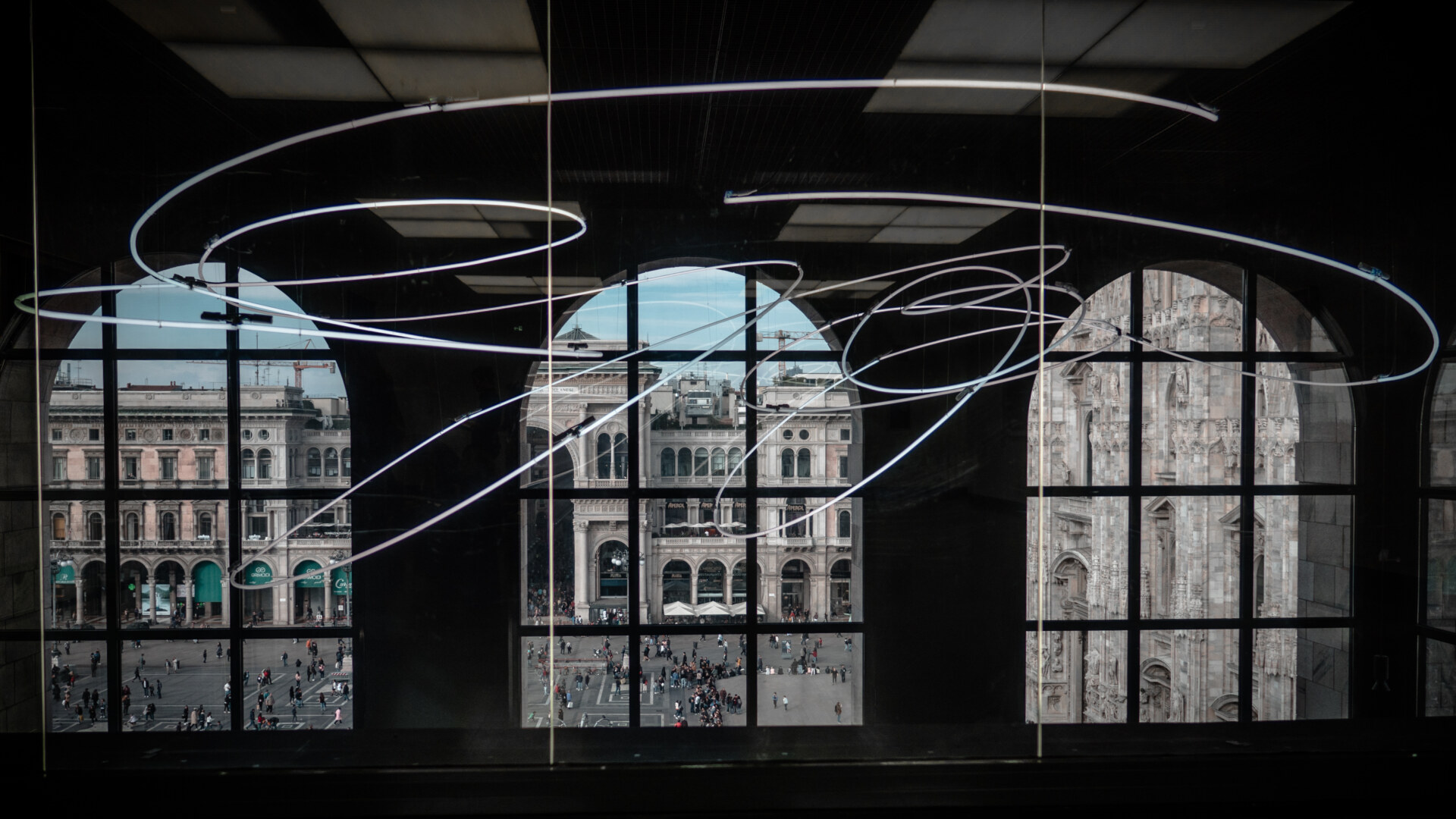
Lucio Fontana at the Museo del Novecento; Photo courtesy of Heinz Bunse
Museo del Novecento
Who ever said this list was going to be all about the Renaissance? The Museo del Novecento focuses on art from the novecento, meaning the 20th century or the 1900s (yes, Italy labels its centuries in a more sensible manner). Having opened in 2010, the museum follows an increasing dedication to the role Italian artists played in Modern art movements. The Italian Futurists take center stage, unsurprising given that it was in Milan in 1909 that Filippo Tommaso Marineti published his Manifesto of Futurism, which set the wheels of this movement in motion. Yet there are also prime sections focusing on artists such as Giorgio de Chirico, Carlo Morandi, and Lucio Fontana (whose viscous, ceramic sculptures must not be missed), all of whose artistic legacy continues globally to this day.

Lorenzo Bartolini's "La Fiducia in Dio", on display at Museo Poldi-Pezzoli
Museo Poldi-Pezzoli
The house-museum par excellence. The core of the collection is the personal one of Count Giacomo Poldi Pezzoli, who donated his holdings to the founding of the museum in 1881. The collection is therefore reflective of his personal taste inasmuch as the setting is a step into how this Count lived. A Renaissance man at heart, Poldi Pezzoli sought out and procured paintings by the likes of Sandro Botticelli and Giovanni Bellini, alongside countless pieces of armor, oriental fabrics, and Venetian glass; it’s a true wünderkammer. An intimate atmosphere is established from the off: dark lights, mahogany and crimson velvet, classic interiors that have not changed in over a century and never should.
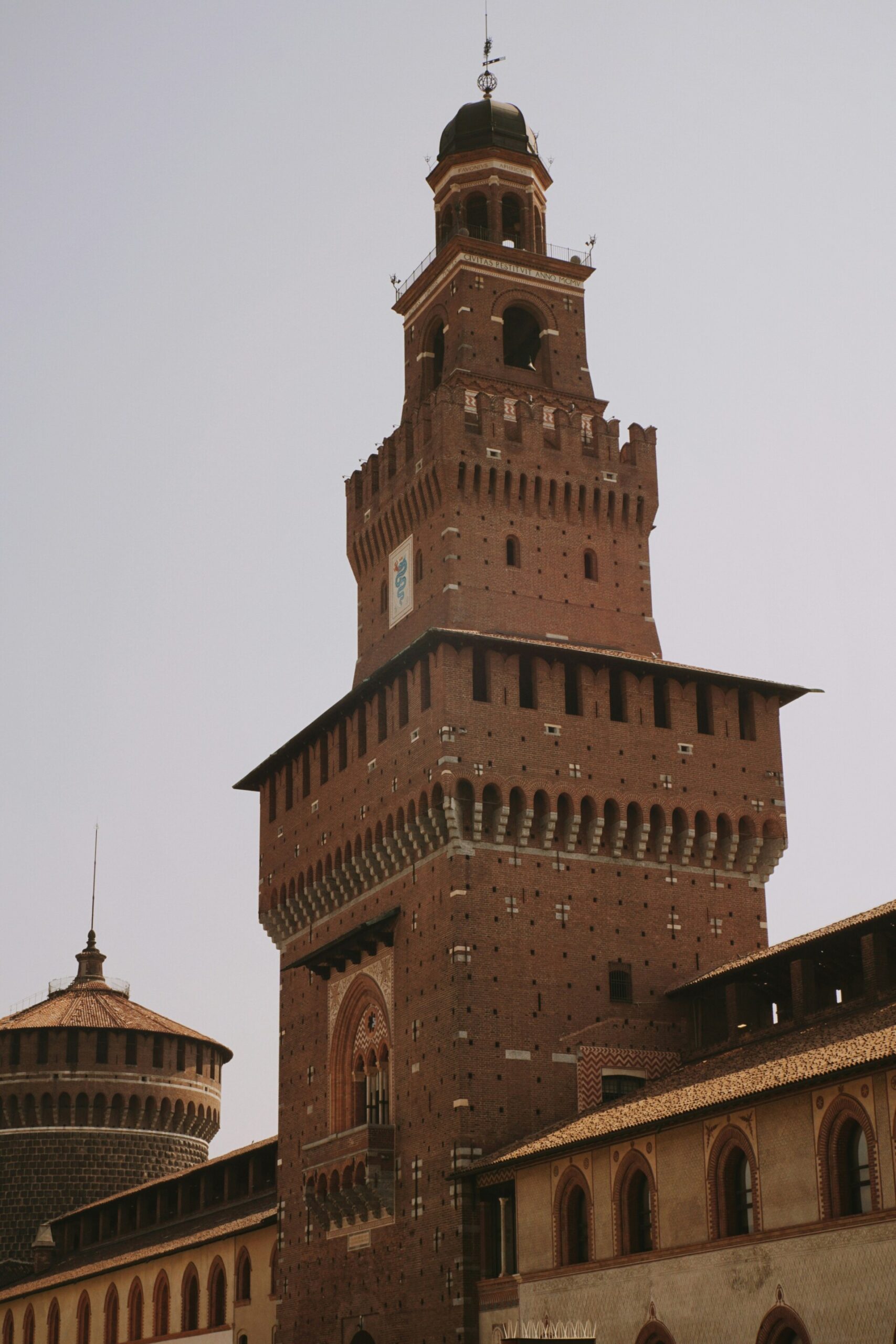
Castello Sforzesco; Photo courtesy of David Salamanca
Castello Sforzesco
It would be a lie to try and say this is a single museum because it is not. Rather, Castello Sfozesco is the former residence of the Sforza dynasty, subsequently divided into smaller museums that focus on different aspects of their collection. There is a museum for Decorative Arts, a museum for Musical Instruments, a museum for Ancient Art… but the must-visit is the most simple of them all. The Museo Pietà Rondanini, dedicated to the last sculpture that Michelangelo created. The sculpture was a project that occupied Michelangelo for over a decade, from 1552 to 1564, and reprises a theme that had fascinated Michelangelo for the entirety of his career: the relationship between the Virgin Mary and Christ. In its sinuous yet pared back form, the Rondanini Pietà is a reflection on Michelangelo’s constant search to extract pathos from stone, even until his dying days. Is there any greater testimony as to why Milan should be on every art lover’s hit list?
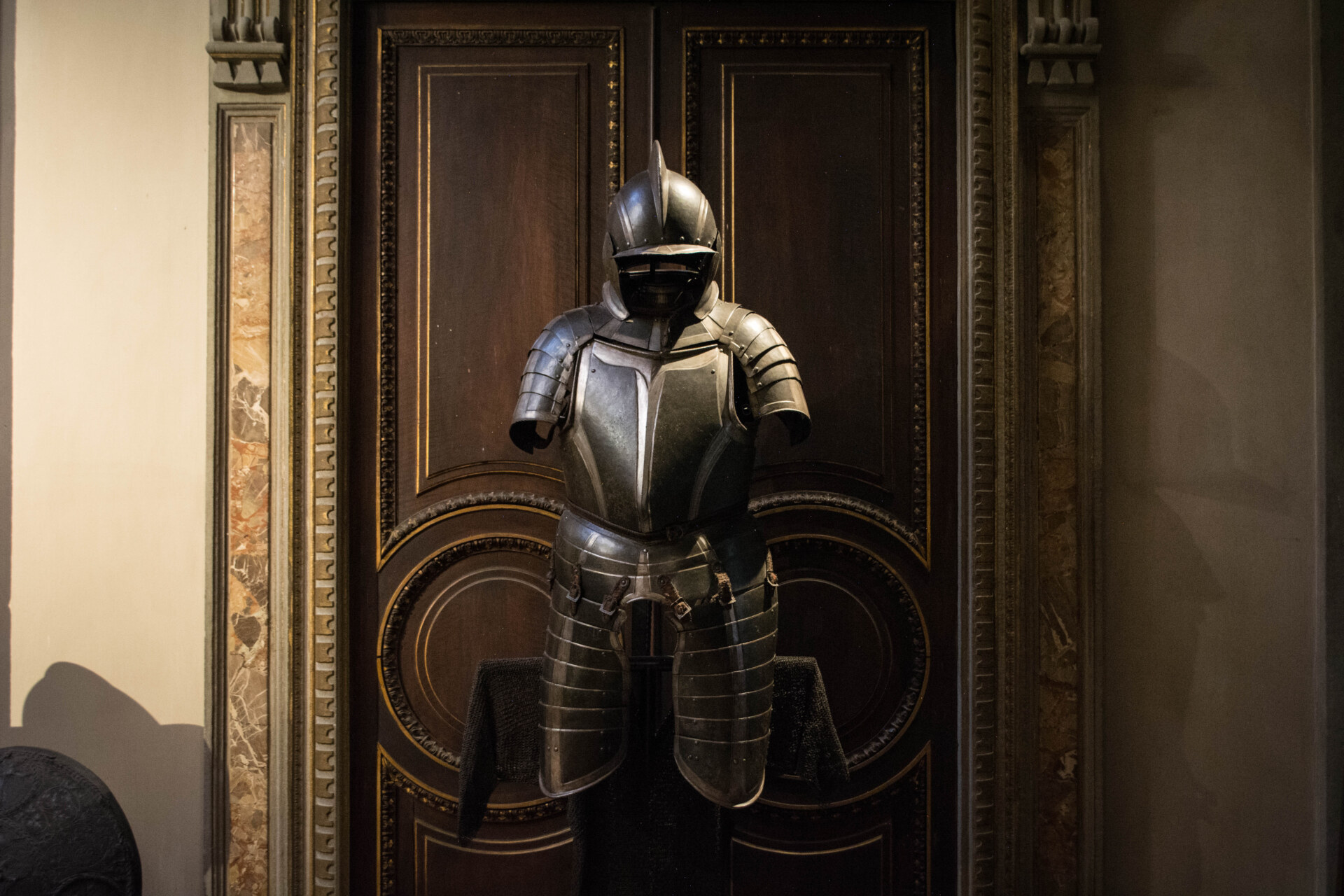
Museo Bagatti Valsecchi; Photo courtesy of Luca Di Ciaccio
Museo Bagatti Valsecchi
Another personal collection that was changed into a museum in order to keep the holdings intact. This museum is the collection of two eccentric brothers: barons Fausto and Giuseppe Bagatti Valsecchi. Their founding statement was “to reconstruct a lordly mansion of the mid 16th century” in their family home, now in the heart of the fashion district. This meant an emphasis on decorative arts, domestic objects, and antiquities which are paired alongside paintings, wooden furnishings, and a healthy dose of glass and ceramic pieces. This gem of a museum really is more than the sum of its (still excellent) individual parts.
